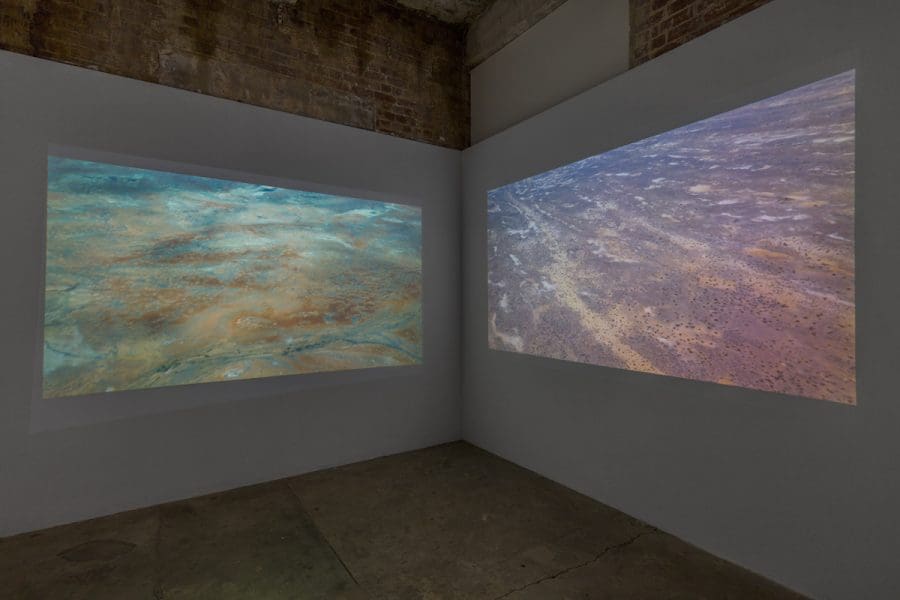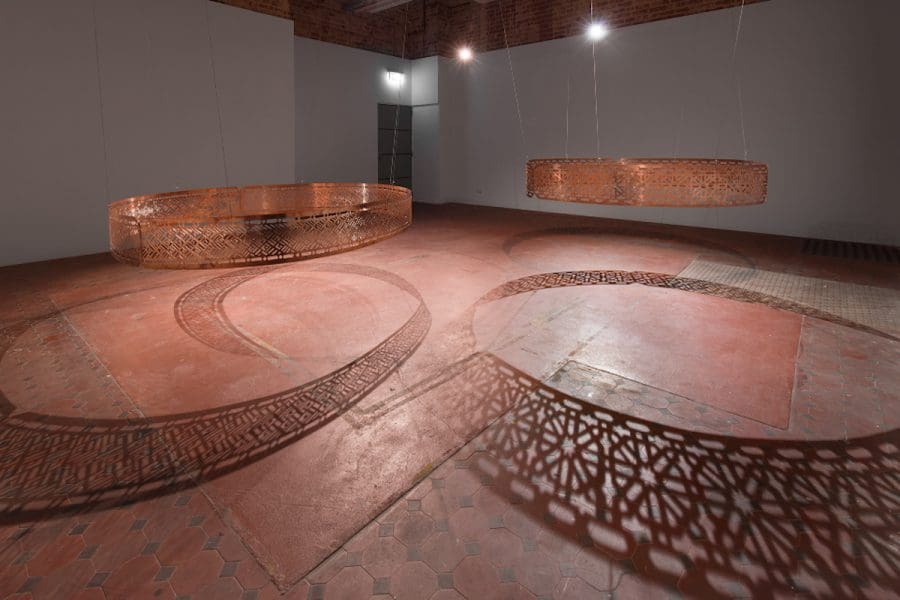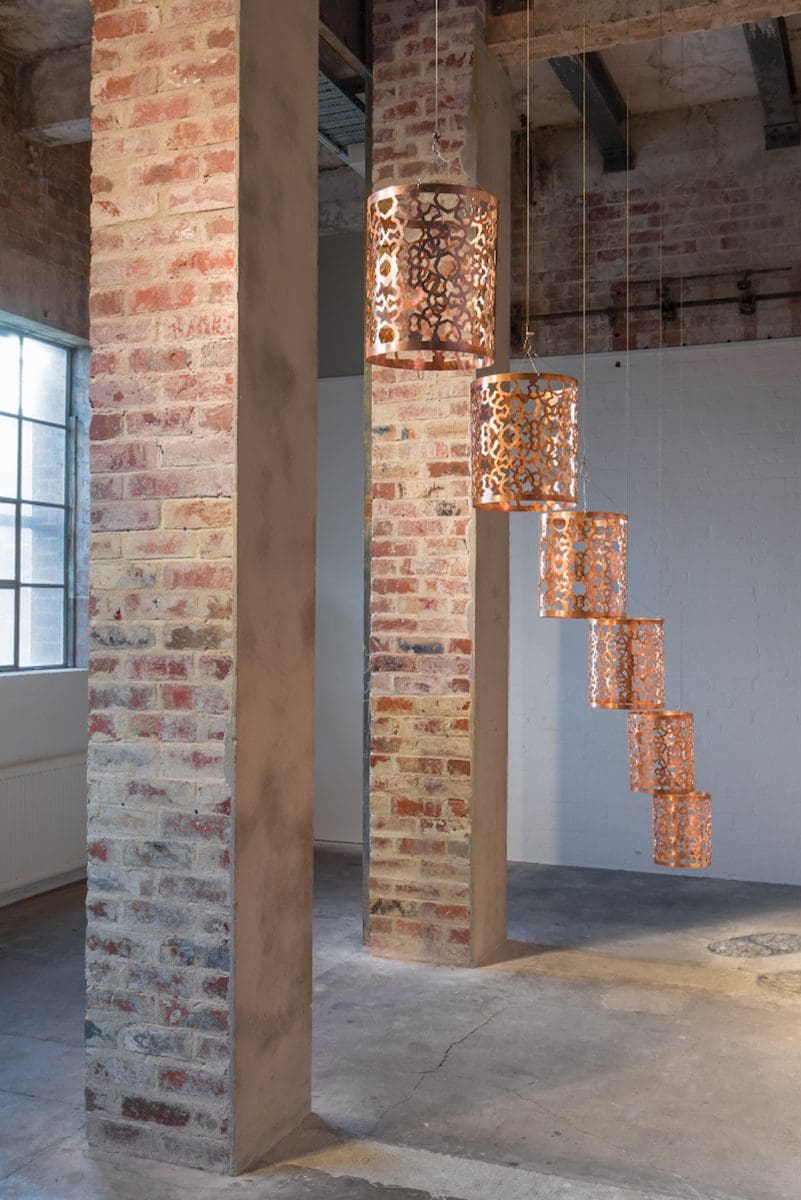
Making Space at the Table
NAP Contemporary’s group show, The Elephant Table, platforms six artists and voices—creating chaos, connection and conversation.

Shireen Taweel, tracing transcendence, 2018, installation view. Photography by Matthew Stanton.

Shireen Taweel, tracing transcendence, 2018, installation view. Photography by Matthew Stanton.

Shireen Taweel, tracing transcendence, 2018, installation view. Photography by Matthew Stanton.

Shireen Taweel, tracing transcendence, 2018, installation view. Photography by Matthew Stanton.

Shireen Taweel, tracing transcendence, 2018, installation view. Photography by Matthew Stanton.
Before even entering the exhibition space where Shireen Taweel’s tracing transcendence was held, the adhan – the Islamic call to prayer – could be heard resonating throughout the cavernous building. It was clamorous yet comforting and transportive – no longer were you in Newport, a scruffy bayside suburb in Melbourne. The adhan would have been a significant part of Taweel’s upbringing, as a second-generation Lebanese-Australian who grew up in Sydney’s western suburbs. And here the artist continues to search for overlooked moments of confluence in the two cultures.
Though it may not be a well-known fact, the history of Islam and Australia actually predates European settlement, with records showing that Muslim fishermen from Southeast Asia began trading with Aboriginal fishermen sometime in the 16th century. Later on, from 1860 onwards, ‘Afghan’ cameleers arrived – not just from Afghanistan, but also the Indian subcontinent. The Ghans, as the cameleers were dubbed, travelled through the Australian outback, and were part of the Burke and Wills expedition.
It was also a meditation on the peace and self-possession that religion offers many, not least within its sacred spaces, whatever shape or form they may take.
The exhibition consisted of six meticulously hand-cut copper installations in varying shapes and dimensions that Taweel is becoming known for. It also featured aerial footage of outback Australia, and a soundtrack of field recordings Taweel made in two locations significant to Australian Islamic history: Marree, South Australia, and Broken Hill, New South Wales. Marree is home to Australia’s earliest known mosque, and according to the NSW Migration Heritage Centre, the Broken Hill Mosque is the only surviving ‘Ghantown’ mosque in Australia.
These early mosques were very basic structures and bear little resemblance to the mosques we know today. Though they lack the flourish, artistry and architectural features associated with modern mosques, they offered the same things: a place for prayer and refuge.
For example, Taweel predominantly works with copper, a material commonly used in Islamic art, especially in Lebanon. Traditional geometric and arabesque Islamic decorative motifs are laboriously hand-cut into metres of copper sheets before being shaped into sculptures that either could be found in mosques – such as screens – or that resemble mosques. Mosque designs vary culturally around the world, but their spatial configurations are more or less universal, featuring a singular and open prayer hall facing Mecca, Saudi Arabia, and the familiar domes and minarets that punctuate skylines, from which the muezzin recites the call to prayer.
On that note, it would be interesting to see this exhibition installed in a singular space, to mirror the spatial syntax of a mosque. But in that particular gallery space, comprising of five separate rooms, this was not a possibility. Not that this configuration detracts from the experience – these individual spaces offer moments of quiet contemplation, just as the early, basic mosques in Australia offered the cameleers the same. Furthermore, the soundtrack of the adhan, layered over Taweel’s field recordings of the outback, carried through the reverberating space, binding the old and new, and cultures near and far, together.
Shireen Taweel: tracing transcendence, The Substation Gallery, from 4 May to 16 June.